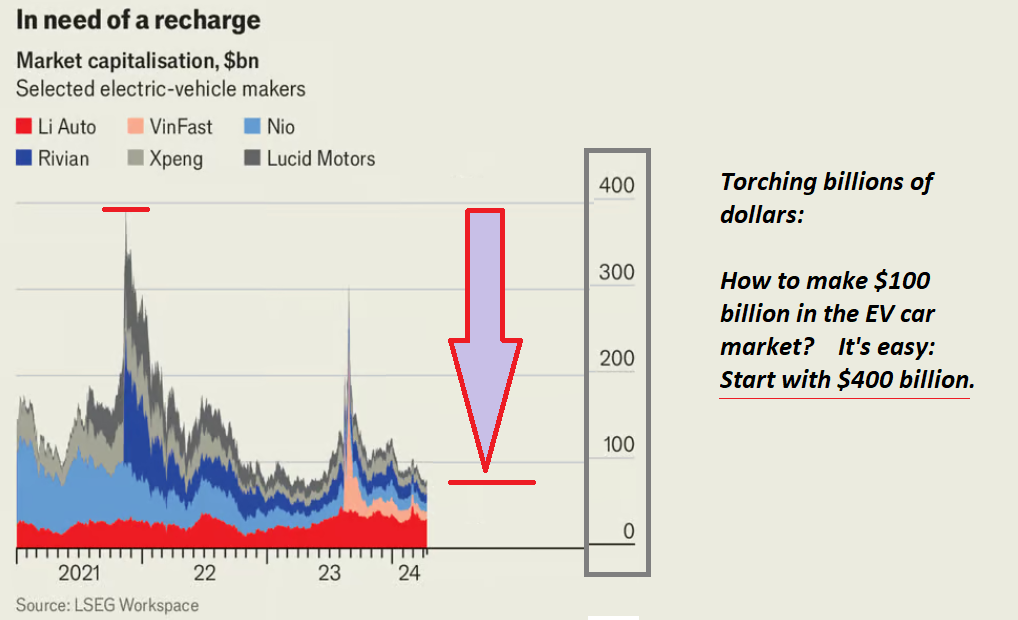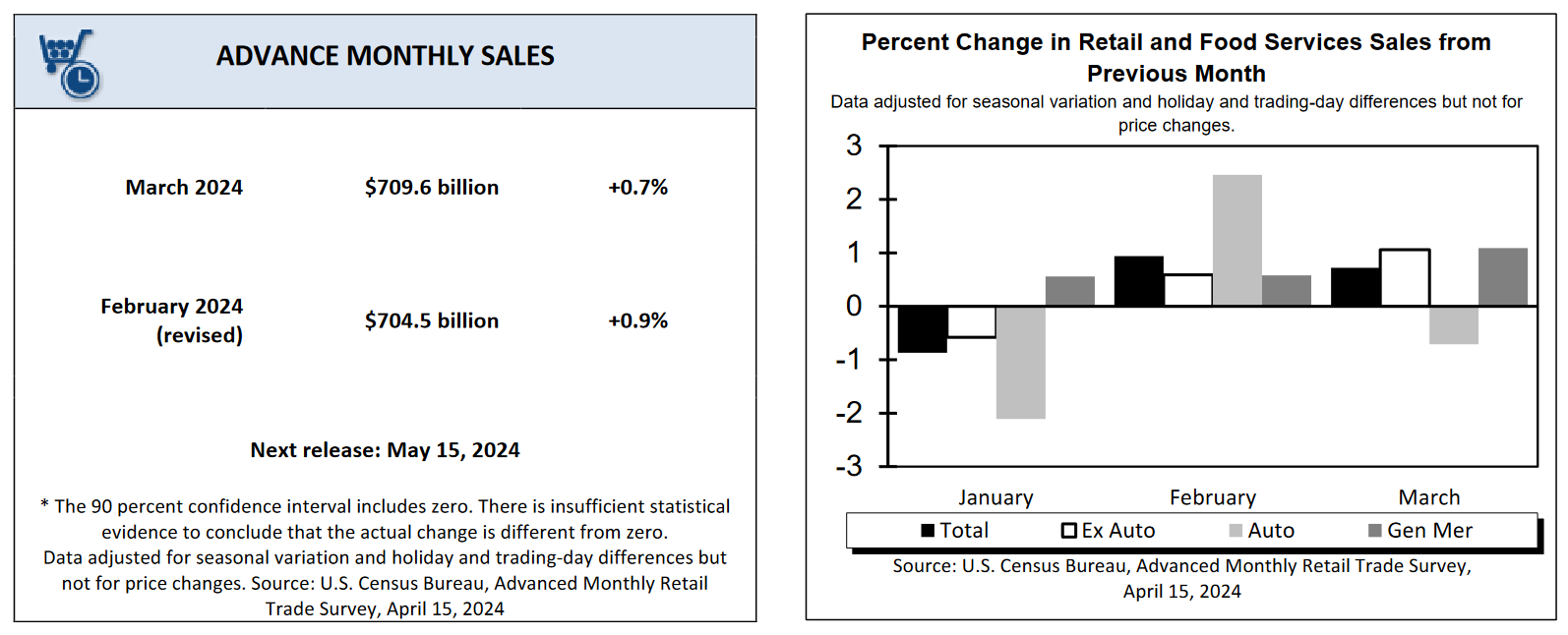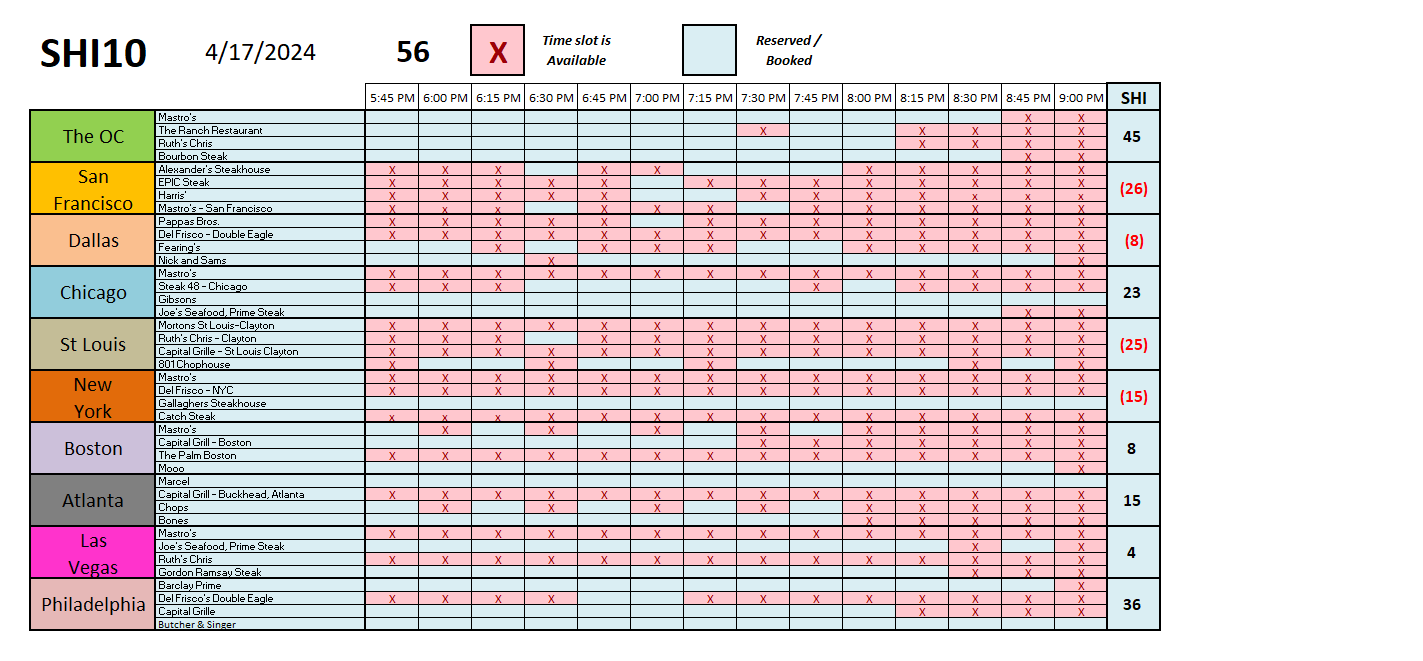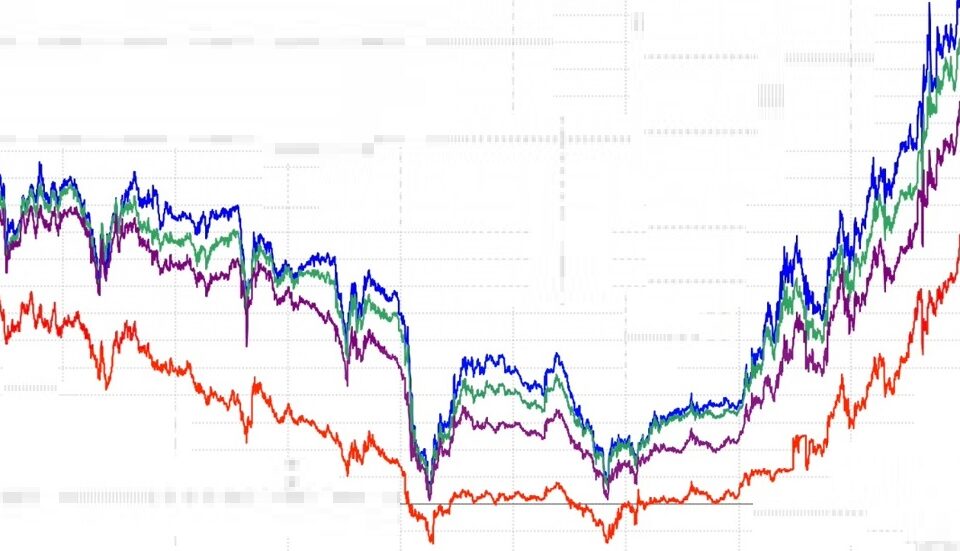SHI 4.17.24 – Wine and EVs

SHI 4.10.24 – Jobs
April 10, 2024
SHI 2.24.24 – Well, That Was Interesting
April 25, 2024What do ‘wine’ and ‘electric vehicles’ have in common?
I’ll get back to that in a moment.
First, have you heard this joke? How can you easily “make” a million dollars in the wine business? …… Give up?
“
How to make a million in wine !!!“
“How to make a million in wine !!!“
It’s simple: Start with $10 million … and lose $9 million.
You are smiling, right? OK, maybe not — you’ve probably heard it before. But the same “joke”, apparently, works quite well for the EV business. How can you make a small fortune in the EV business? Start with a large one. Then lose the vast majority of it.
Welcome to this week’s Steak House Index update.
If you are new to my blog, or you need a refresher on the SHI10, or its objective and methodology, I suggest you open and read the original BLOG: https://www.steakhouseindex.com/move-over-big-mac-index-here-comes-the-steak-house-index/
Why You Should Care: The US economy and US dollar are the bedrock of the world’s economy. But is the US economy expanding or contracting? Expanding …. By the end 2023, in ‘current-dollar‘ terms, US annual economic output rose to an annualized rate of $27.94 trillion. After enduring the fastest FED rate hike in over 40 years, America’s current-dollar GDP still increased at an annualized rate of 4.8% during the fourth quarter of 2023. Even the ‘real’ GDP growth rate was strong … clocking in at the annual rate of 3.3% during Q4.
According to the IMF, the world’s annual GDP expanded to over $105 trillion in 2022. Further, IMF expects global GDP to reach almost $135 trillion by 2028 — an increase of more than 28% in just 5 years.
America’s GDP remains around 25% of all global GDP. Collectively, the US, the European Common Market, and China generate about 70% of the global economic output. These are the 3 big, global players. They bear close scrutiny.
The objective of this blog is singular.
It attempts to predict the direction of our GDP ahead of official economic releases. Historically, ‘personal consumption expenditures,’ or PCE, has been the largest component of US GDP growth — typically about 2/3 of all GDP growth. In fact, the majority of all GDP increases (or declines) usually results from (increases or decreases in) consumer spending. Consumer spending is clearly a critical financial metric. In all likelihood, the most important financial metric. The Steak House Index focuses right here … on the “consumer spending” metric. I intend the SHI10 is to be predictive, anticipating where the economy is going – not where it’s been.
Taking action: Keep up with this weekly BLOG update. Not only will we cover the SHI and SHI10, but we’ll explore “fun” items of economic importance. Hopefully you find the discussion fun, too.
If the SHI10 index moves appreciably -– either showing massive improvement or significant declines –- indicating growing economic strength or a potential recession, we’ll discuss possible actions at that time.
The Blog:
Billions have been lost in the EV business. Hundreds of billions of dollars, actually.
The image below, courtesy of The Economist magazine, with a few additions from me, of course, tells the whole story:

As 2022 began, the combined market capitalization of the selected 6 EV automakers above approached $400 billion. Today, that number is closer to $70. Billions of dollars have been torched in the process, as stock investors scoured EV makers to find the next Tesla … and the next trillion dollar auto maker.
Of course, no such company exists. Then or now. Tesla’s market cap was over $1 trillion in 2021. It is now less than $500 billion. And falling.
Nor is a trillion dollar EV company likely to exist in the future. Remember: The value of an asset is some function of its income. Only Li Auto, a small Chinese company that primarily makes hybrids, is marginally profitable. The others burn cash each month as losses mount. Rivian, one of the best funded EV makers, finished 2023 with $9.4 billion in cash on their balance sheet. But they lose a ton of money on each vehicle they sell: In a Q2, 2023 letter to shareholders, Rivian revealed they lost $32,595 on every EV they sold. For a car company averaging a sale price around $75,000, a $33,000 loss on each vehicle is staggering. In 2023, Rivian produced 57,232 vehicles. Assuming a $33,000 loss on each, their 2023 loss was almost $1.9 billion. Ouch.
Will they survive and achieve profitability? Maybe is probably as effusive as I can get. Maybe. Which is pretty amazing, and a little sad, for a company that completed a November 9th, 2021 IPO at $78 per share, for a capitalized value of $66.5 billion. On the first day of trading, the stock “opened” at $106.75 and closed at just over $100 per share, for a cap value of $86 billion. Today, the stock trades at about $8.50 a share and has a market cap less than the $9.4 billion cash on its balance sheet. 90% of their market capitalization has vanished into thin air. Double ouch.
Buying a winery might be a better idea… and a better investment. 🙂
How might Rivian turn it around? Well, clearly, they need to find a way to sell more cars and become profitable. Which means they need to either (1) reduce the vehicle’s manufacturing cost or, (2) increase the vehicle’s sale price above its all-in cost. Which would be difficult, of course, as that would set the sale price to the consumer at well over $100,000 per vehicle. Few will pay that. Unfortunately, raising prices while expecting to increase sales is not a sound turn-around strategy.
No, they have a serious problem. And the current stock price reflects this reality. At the moment, I can’t see a path to success for Rivian. And the same can be said for the other budding EV companies, both here and abroad, although many of the Chinese companies have a much lower production cost. Even Tesla, while currently profitable, is struggling: Earlier this week, they announced a 10% global staff cut to improve company profitability.
This is not to suggest the EV revolution will fail. No, it will succeed. However, evidence suggests the revolution is more of an evolution. It will simply take longer than the experts claimed a few years ago. Essentially, we have a “cost/benefit” problem here. The “cost” is too high when compared to the current ‘benefit’ of ownership. But this will change. Battery technology will improve. Charging technology will improve. And costs will come down. Eventually.
For the moment, however, I am personally avoiding all EV stock investments. I’m sure one or more companies will eventually “win” … but I don’t know who or when. And I have no functional yardstick to help in the analysis. In my opinion, any choice today would be a crap-shoot. I’m not a fan of torching anyone’s hard earned dollars. 🙂
On the other hand, consumer spending numbers reached a new high this month. “Retail Sales” are off the hook. This week the Commerce Department reported March retail sales increased again by 0.7% over the prior month. Consumers continue to spend with commitment and vigor, setting new spending records every single month. Year-over-year, comparing March of last year to March of 2024, retail sales were up 4%. Retail sales are up the most — with “Non-store retailers” up 11.3% Y-O-Y and the sector experiencing the largest decline is “Furniture” at a 6.1% loss, Y-O-Y.
Motor vehicle sales were up 2.1% over the prior year, however EV sales are not broken out separately … so no further comment here.

Looking at the above chart, we see the March numbers follow-on after a very strong February. January, on the other hand, saw weaker retail sales across the board — a result attributed to harsh weather across the country.
Let’s move on. Are expensive steaks enjoying the same boost in demand and sales.

Nope. Expensive steak sales — well, reservations at least — are somewhat consistent, if not lackluster. Again. Our OC expensive eateries are performing fairly consistently, but reservation demand is off in San Francisco, Dallas, and New York. Our other SHI markets are a mixed bag. Here’s the SHI40 chart:

I’ll finish today with a quick comment on the FED ‘Beige Book’ released earlier today, and a glance at the Atlanta and NY FED economic forecasts.
The US is broken up into 12 ‘Federal Reserve Districts.’ In each district is a Federal Reserve Bank. The Beige Book offers us a window into US economic activity, as seen in each of the 12 districts. Today’s report said, “Overall economic activity expanded slightly, on balance, since late February. Ten out of twelve Districts experienced either slight or modest economic growth—up from eight in the previous report, while the other two reported no changes in activity.” The 2 “flat” districts were New York and Philly.
Here’s a link to a nice summary … if you’re interested.
https://www.federalreserve.gov/monetarypolicy/beigebook202404-summary.htm
However, high-level, the Beige Book report qualitatively supports the fact that the US economy continues to expand.
Atlanta’s ‘GDPNow’ and the NY FED ‘Nowcast’ both attempt to quantify the data. And both reflect a buoyant economy.
The GDPNow model estimate for real GDP growth (seasonally adjusted annual rate) in the first quarter of 2024 is 2.9% on April 16, up from 2.8% on April 15. The NY FED staff Nowcast for Q2, on the other hand, is a slight bit lower at 2.6%. Remember: These numbers are ‘real’ — meaning nominal GDP growth is probably running north of 5% on an annualized basis right now. Wow.
No matter how you slice the filet, our economy is cooking. Grills are hot, steaks are sizzling, and the US economy is doing just fine. Pass the 1945 Domaine de la Romanee-Conti. I’ll have another glass.
<:> Terry Liebman




